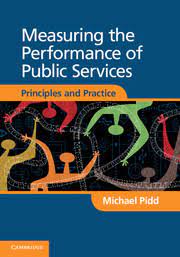Measuring the performance of public agencies and programmes is essential to ensure that citizens enjoy quality services and that governments can be sure that taxpayers receive value for money. As such, good performance measurement is a crucial component of improvement and planning, monitoring and control, comparison and benchmarking and also ensures democratic accountability. This book shows how the principles, uses and practice of performance measurement for public services differ from those in for-profit organisations, being based on the need to add public value rather than profit. It describes methods and approaches for measuring performance through time, for constructing and using scorecards, composite indicators, the use of league tables and rankings and argues that data-envelopment analysis is a useful tool when thinking about performance. This demonstrates the importance of allowing for the multidimensional nature of performance, as well as the need to base measurement on a sound technical footing.
Online Catalogue
Measuring the Performance of Public Services

